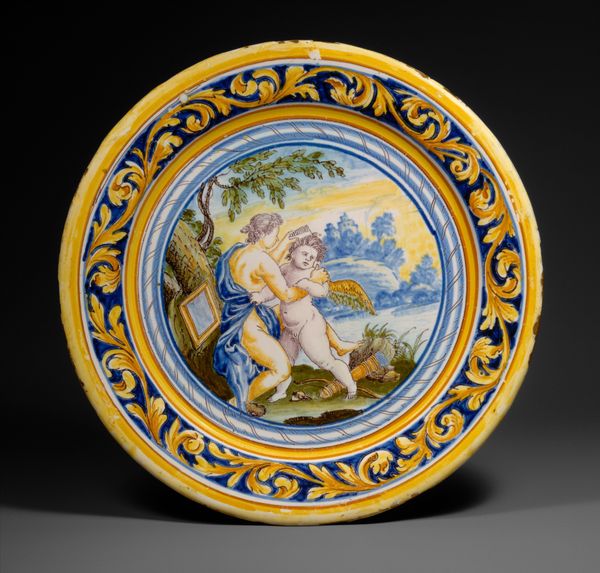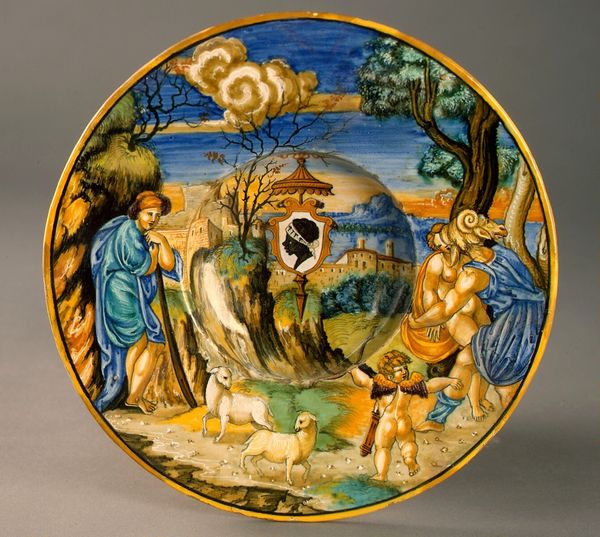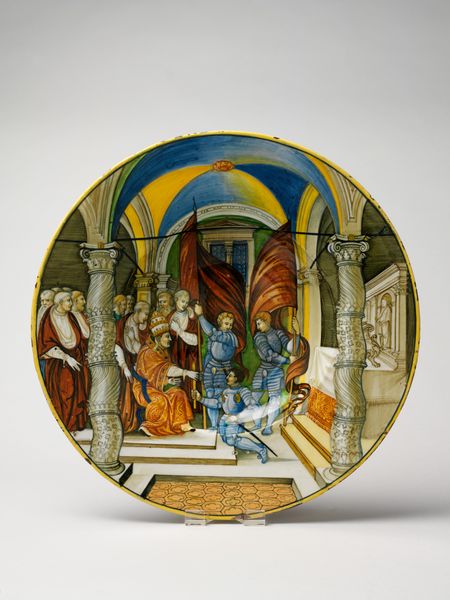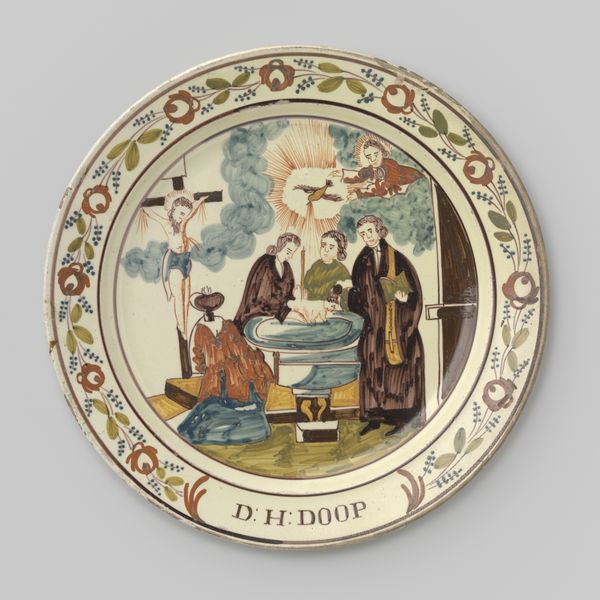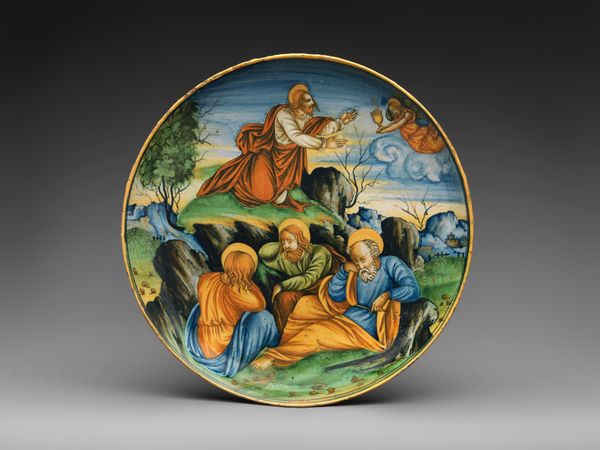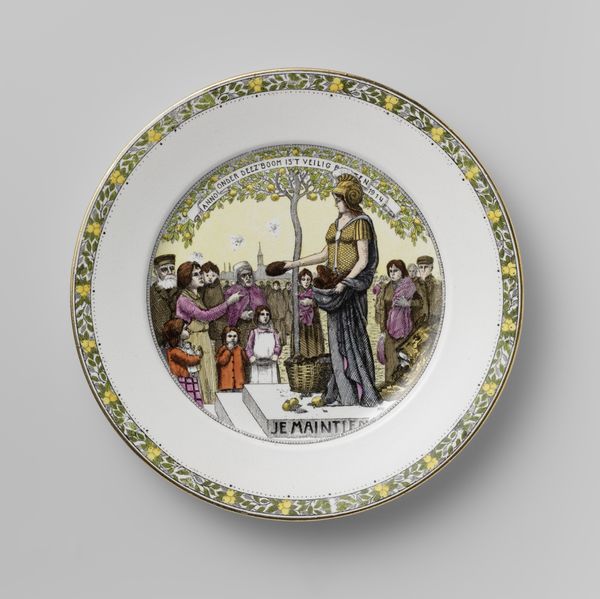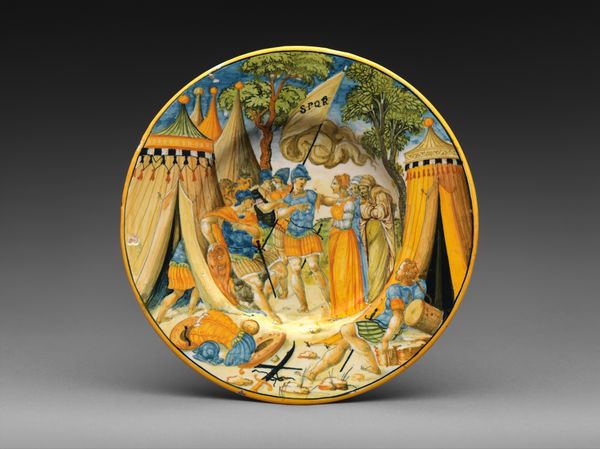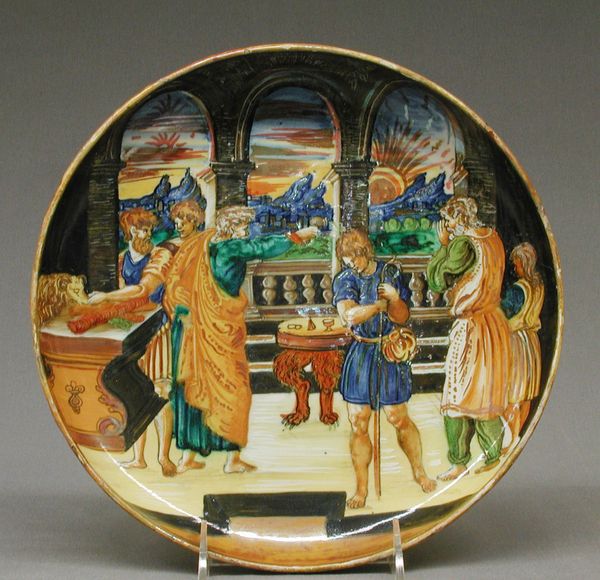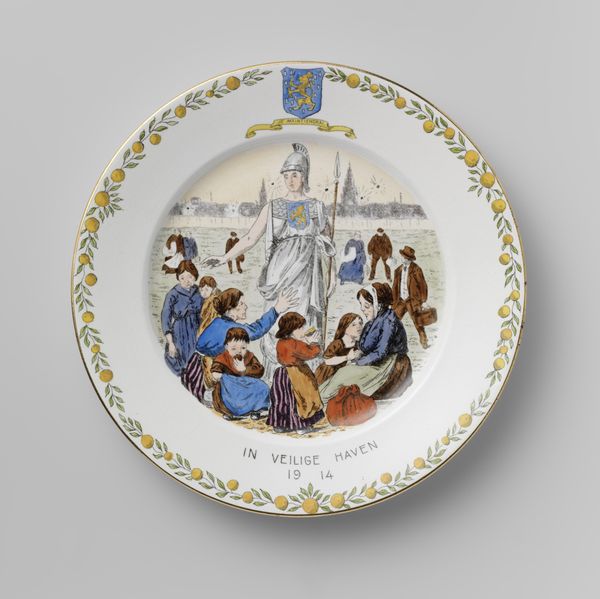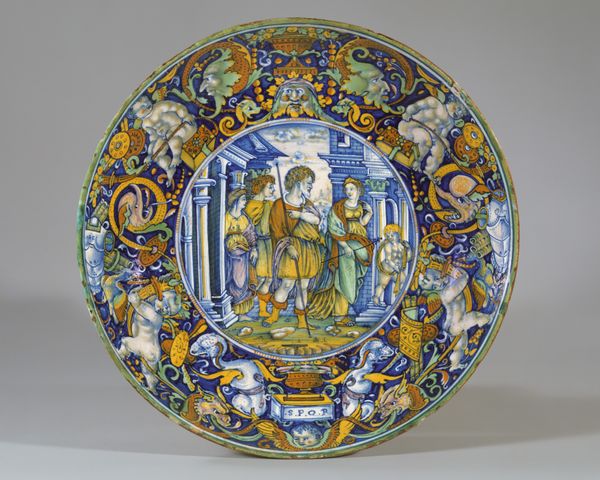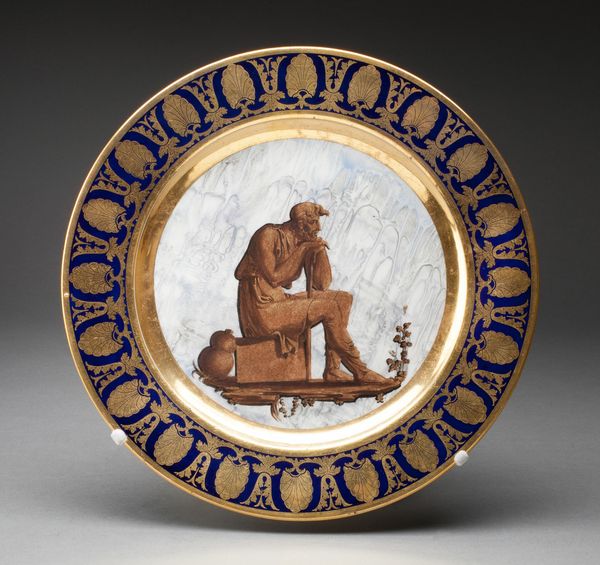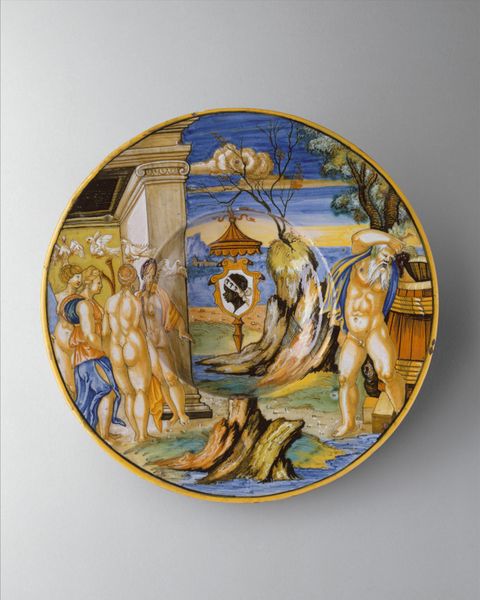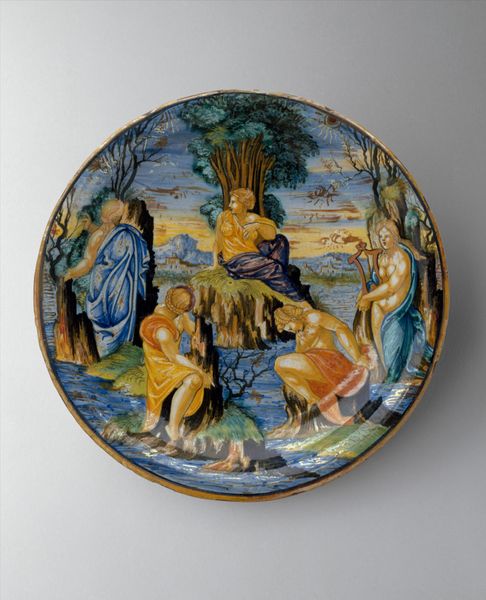
Broth bowl and cover (scodella and tagliere) from an accouchement set; Aeneas leaving Troy with his father and son (inside bowl); Pyramis and Thisbe (on cover) 1527 - 1543
0:00
0:00
ceramic
#
narrative-art
#
ceramic
#
figuration
#
history-painting
#
italian-renaissance
#
miniature
Dimensions: H. 4 1/8 in. (10.5 cm); Diam. 7 3/4 in. (19.7 cm)
Copyright: Public Domain
Editor: This is a remarkable piece, a broth bowl and cover by Baldassare Manara, dating from 1527 to 1543. It's made of ceramic, and it depicts scenes from Aeneas leaving Troy and the story of Pyramis and Thisbe. It's striking how these very different stories are contained on such a functional object. What layers of meaning do you see in this work? Curator: That's a keen observation! The juxtaposition of these stories – one of duty and foundation, the other of tragic love – invites us to consider the societal pressures placed on individuals, especially within the context of family and lineage. This bowl, part of a birthing set, speaks volumes about expectations surrounding childbirth and the continuation of patriarchal structures. How might these stories reflect anxieties around gender roles? Editor: So you're saying that even something as seemingly simple as a broth bowl can be a site of complex cultural negotiations? Curator: Precisely! These domestic objects were never neutral. Consider the miniature scale: stories of heroes and lovers reduced to fit within the confines of domesticity. How does the medium of ceramic contribute to this dialogue? Editor: Perhaps the fragility of the ceramic mirrors the vulnerability of both the mother and the new family? The images feel both timeless and intimate. Curator: Yes, and the use of classical narratives serves to legitimize and naturalize social hierarchies. But, is the bowl just a celebration of tradition? Could the tragic tale of Pyramis and Thisbe represent a critique of societal restrictions imposed on women and their desires? Editor: That's fascinating! I hadn’t considered the bowl as potentially subversive, but by placing these stories side by side, it opens up that possibility. I learned a lot about how art from the past, even on something ordinary like this, still challenges us to see differently today. Curator: Absolutely. And it’s through our continued questioning that we keep the dialogue alive.
Comments
No comments
Be the first to comment and join the conversation on the ultimate creative platform.
